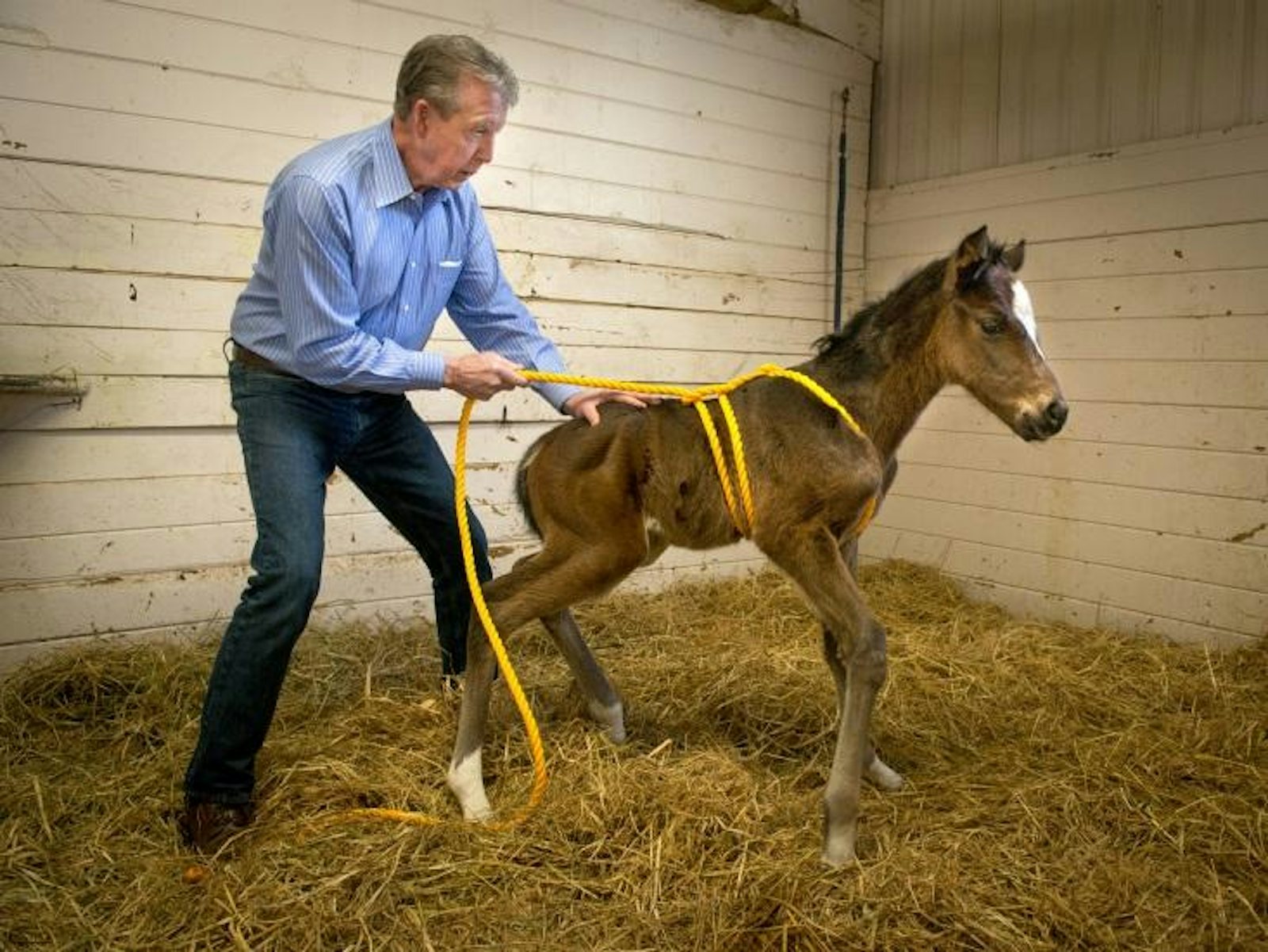
As a toxicologist at the University of California, Davis, Isaac Pessah focuses on how different molecules regulate human brain function and development. Yet when he found himself at the university’s equine research center, watching a troubled newborn foal, he was struck by its eerily familiar clinical symptoms.
Horses are prey animals, and like most animals whose chief form of defense is flight, they are up on their feet almost immediately after birth. At first they stagger around in the straw in their stalls, pitching their outsized legs out like tent poles for support, but within an hour or two they are on their feet and nursing.
For foals born with a disorder called maladjusted foal syndrome (MFS), that transition isn’t so smooth. These foals are detached and disoriented. They don’t seem to recognize their mothers, failing to make normal sounds or try to nurse. One foal at the UC Davis center couldn’t find his way out of a corner and tried to climb into the feeder bin. Horse breeders call them “dummy” foals.
Pessah had come to look at these foals because John Madigan, a professor at the university and an expert in equine neonatal health, believed he had found the key to MFS—and that the same key might also be one of the many factors behind autism disorder in children.
Maladjusted foal syndrome was long believed to be the result of oxygen deprivation either in the womb or during birth, but Madigan wasn’t satisfied with that. He wanted to figure out what was happening on a neurochemical level with these foals.
Madigan knew that three hormones foals produce naturally—two neurosteroids and one pituitary hormone—act as a sedative in the womb. These chemicals keep the foal quiet by acting on the same receptor as synthetic sedatives and anesthetics. In a normal foal, the body stops producing these neurosteroids after birth. But foals with the disorder seem to miss some crucial signal, and their neurosteroid levels remain high, leading to the symptoms of MFS.
“It’s like watching Lassie come home. This is an emotional thing.”
Madigan also observed that foals born with the disorder often did not have a normal 20- to 40-minute birth. He believes that the physical pressure of going through the birth canal acts as what he calls an “on switch,” signaling the foal to stop producing these neurosteroids and “wake up.” While there may be other triggers for MFS, the neurochemical issue would explain why so many foals with the disorder have rushed births or are born through C-section: They miss the key birth signal and erroneously continue producing the sedative neurosteroids.
Madigan will start a randomized clinical trial this spring to test a treatment based on that theory. In a technique referred to by some as “the Madigan Squeeze,” Madigan wraps foals with MFS in a rope harness and applies pressure for 20 minutes to mimic the birthing process. Anecdotally, he says he’s already seen results: Foals that were born with MFS hopped up and nuzzled their mothers almost immediately.
“It’s like watching Lassie come home,” Madigan says. “This is an emotional thing.”
The symptoms Madigan saw in the foals with maladjusted foal syndrome seemed so similar to the hallmarks of autism in human children that Madigan invited Dr. Pessah to visit the equine center. The absence of connection between the foal and the mother indeed reminded Pessah of the detachment and the lack of eye contact typically seen in children with autism. It can be very problematic to directly compare behavior in different species, but the similarities Pessah saw served as promising inspiration for further research.
After leaving the barn, Pessah wondered: Could neurosteroids be disregulated in children with autism, and could that contribute to some of the core symptoms of the disease? What physicians call “autism” is diagnosed by the presence of certain behaviors, not an objective biological marker. If neurosteroid levels were that marker, Pessah thought, that knowledge might provide a new avenue to think about therapeutic strategies. “We now know that neurosteroids are broadly expressed and there are so many different structures that one could think of them as customized for particular processes,” Pessah said. “We have evidence that neurosteroids influence the development of neuronetworks, and they do so at amazingly low concentrations.”
“Are we looking at something that’s causative of having autism or are we looking at something that’s a reflection of having developed autism?”
The problem was that no one had adequately measured neurosteroid levels in children with autism—although the idea wasn’t totally out of left field. A Polish study published in 2013 had found that children with autism had statistically higher levels of neurosteroids in their saliva than children without the disorder. The researchers suggested that those steroids contributed to some of the symptoms, such as anxiety, sleep disturbances and sensory deficits, and could be used as biomarkers to measure the progress of therapy.
James McPartland, a psychologist at the Yale Child Study Center, says the connection between neurosteroids and autism is worth looking into further, especially given the results of the Polish study. But as of now, it’s at an “early stage of gathering evidence,” he says. “Are we looking at something that’s causative of having autism or are we looking at something that’s a reflection of having developed autism?” McParland asks. “The way to answer those kinds of questions is to look earlier in development, so that’s something that makes sense [to study],” he says. “This is a novel area of research.”
Pessah realized that he had the tools to do the kind of research that the current literature lacked. The UC Davis MIND Institute has two ongoing studies that Pessah intends to leverage to test his hypothesis about neurosteroids and autism. One, a longitudinal study called MARBLES, began in 2006 and examines pre-natal and post-partum biological and environmental risk factors for autism. (Other studies have already shown statistically significant—if weak—evidence that C-section births correlate to children born with autism, although the mechanism and significance remains unclear.) The second study, CHARGE, is a comprehensive study of environmental causes and risk factors that began in 2003.
Pessah says that Madigan’s idea—that a failure of transition of consciousness at birth may contribute to the symptoms of autism—is an “innovative” and promising hypothesis. “When I went out to the research facility during foaling season and saw one of these foals, it was amazing to me the disconnectivity between the foal and the mother and how they [Madigan’s group] dealt with it.”
“You can’t look at failure of transition of consciousness as a cause yet, but we know there’s a sequence of events that occurs,” Madigan said. “This is a very interesting evolutionary biological mechanism that maybe we haven’t been paying much attention to.”
Katie Bo Williams is the editor of the health care trade publication Healthcare Dive and a freelance writer based in Washington, D.C. Her work has appeared in Nautilus, Discover, and Twisted South.






























